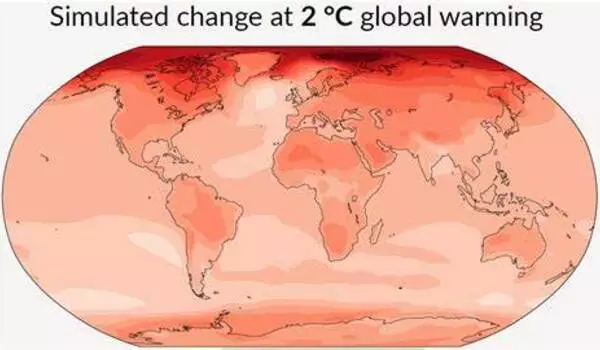A team of Met Office scientists wrote in the journal Nature ahead of COP28 that there is currently no formally agreed way of defining the current level of global warming relevant to the Paris Agreement. They’ve come up with a solution.
While the global average temperature in a given year is well-known, it cannot be used to determine whether the “Paris 1.5” target has been met or not because the Paris Agreement refers to long-term warming rather than individual years. However, no alternative has been formally agreed upon. There may be confusion and delay in responding if there is no agreement on what constitutes a breach of the Paris 1.5.
The paper’s lead author is Professor Richard Betts MBE of the Met Office and the University of Exeter. “Clarity on breaching the Paris Agreement guard rails will be critical,” he said. Without agreement on what constitutes exceeding 1.5°C, we risk distraction and confusion at a time when action to avoid the worst effects of climate change is even more critical.”
Clarity on breaching the Paris Agreement guard rails will be critical. Without agreement on what constitutes exceeding 1.5°C, we risk distraction and confusion at a time when action to avoid the worst effects of climate change is even more critical.
Professor Richard Betts
New indicators for global warming levels
Some of the current proposed metrics are based on long-term averages of annual global annual temperature (typically over two decades).
Dr. Betts went on to say: “Using the average global temperature over the last 20 years would mean we would have to wait ten years to confirm whether the 1.5 °C ceiling has been reached: creating a decade of otherwise preventable delay.”
“Today, we propose an indicator that combines the last ten years of global temperature observations with a projection or forecast for the next ten years.” If adopted, this could result in a universally agreed-upon measure of global warming, triggering immediate action to prevent further rises.”

Using this method, the researchers discovered that the current global warming level is around 1.26°C, with an uncertainty range of 1.13°C to 1.43°C. One of the next five years is more likely than not to reach or even exceed 1.5°C above pre-industrial levels. However, even an unusually warm year does not imply that we have reached the first of the Paris Agreement’s guard rails.
The Earth’s climate system exhibits natural variability, with annual temperatures fluctuating by small margins.
Professor Betts went on to say: “Using an indicator of several years of observations and projections will smooth out the natural variation to reveal the underlying human-induced warming.”
2023 global temperature
According to preliminary estimates of the global average surface temperature for 2023, the year could be the warmest on record. The year is on track to outperform 2016, which is currently the warmest year on record. The year 2023 is expected to continue the trend of being one of the warmest on record since 1850.
The series begins in 2015 and includes years at both ends of natural climate variability. Some years, such as 2016 and 2023, will have been naturally warmer due to the influence of El Nio – when natural warming of parts of the tropical Pacific temporarily warms the planet. However, the series includes years that should have been naturally slightly cooler.
Professor Betts concluded: “The fact that the warmest years on record include both the highs and lows of natural climate variability is yet more evidence that climate change driven by human-induced greenhouse gas emissions dominates the recent climate record.”
Global warming dashboard
A new section has been added to the Met Office Climate Dashboard to illustrate the current level of global warming, in addition to the newly proposed indicators. The ‘Indicators of Global Warming’ dashboard uses Met Office HadCRUT5 data to display eight separate indicators as well as the observed global mean temperature.
The page also includes an indicator of current Global Surface Warming across all eight methodologies, as well as a table that describes each indicator in detail, including a central estimate figure and uncertainty boundaries.















